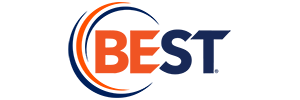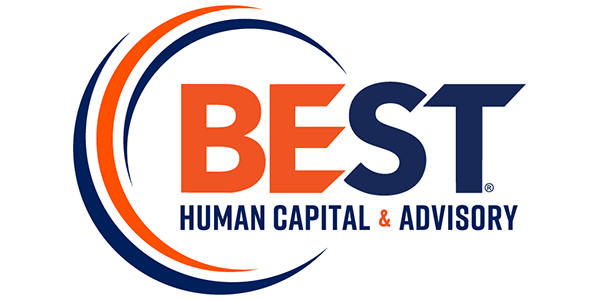What to Expect in Hiring Post-Pandemic?
A 2021-2022 Employer Hiring Guide as the Pandemic Recession Subsides
Change is the one constant in business. The recent pandemic, recession, and social justice issues have forced change upon companies and employees at a faster rate than ever before. Many business leaders were caught flatfooted at the outset, and it has been unlike any other challenge we have encountered. Now, as the pandemic is gradually beginning to subside, business leaders are looking to the future of hiring and getting their businesses back to some semblance of pre-pandemic normality.
The job market for talent, however, is very different today than before this crisis began. While some leaders remember the previous Great Recession of 2007 – 2009, many are new and are asking what to expect as the pandemic subsides. How will the market change, and what do the trends tell us? Having lived, worked, and hired through the last recession’s shift from employer-driven to candidate-driven market, here are some trends, explanations, and information intended to guide leaders through the coming market shift.
 Many industries have been in an employer-driven market mindset in the early phases and throughout much of the pandemic-driven recession. An employer-driven market is one where labor demand is low, and labor supply is high. Under these conditions, wages tend to decline. For those who retained their jobs through this crisis, more was expected out of each person. Often labor hours per person increased despite the shift to remote work for many administrative-based jobs. Those in many industries for whom it was mission-critical to continue to work onsite with their employer also saw dramatic changes in workflow and amount of work expected per employee. Processes and procedures made stark changes to accommodate CDC guidelines. Employers focused less on many elements of their corporate culture. They were in financial protection mode, struggling to control cash flow first and rightfully to ensure there was a business for people to come back to in the future.
Many industries have been in an employer-driven market mindset in the early phases and throughout much of the pandemic-driven recession. An employer-driven market is one where labor demand is low, and labor supply is high. Under these conditions, wages tend to decline. For those who retained their jobs through this crisis, more was expected out of each person. Often labor hours per person increased despite the shift to remote work for many administrative-based jobs. Those in many industries for whom it was mission-critical to continue to work onsite with their employer also saw dramatic changes in workflow and amount of work expected per employee. Processes and procedures made stark changes to accommodate CDC guidelines. Employers focused less on many elements of their corporate culture. They were in financial protection mode, struggling to control cash flow first and rightfully to ensure there was a business for people to come back to in the future.
 As the economy makes its gradual turn back to pre-pandemic levels and begins to come out of this recession, the labor market will again shift to a candidate-driven market. A candidate-driven market is one where labor demand is high, and the supply is low, or basically what we had up until March 2020 when the lockdowns began. There were more open positions than people available to fill them at that time, a trend achieved in late 2017 with that gap growing each month since. At the time of this writing, 8.1 million job openings are being reported, yet companies are struggling mightily to fill these open positions. Under such conditions, wages tend to increase as competition for the same people becomes fiercer. Longevity in a role or company tends to decrease as candidates move from role to role and company-to-company faster to build skills and grow their financial position. Labor hours per person tend to decline, and companies tend to reexamine corporate culture to control labor costs. Work/life balance becomes more critical to attract and retain talent.
As the economy makes its gradual turn back to pre-pandemic levels and begins to come out of this recession, the labor market will again shift to a candidate-driven market. A candidate-driven market is one where labor demand is high, and the supply is low, or basically what we had up until March 2020 when the lockdowns began. There were more open positions than people available to fill them at that time, a trend achieved in late 2017 with that gap growing each month since. At the time of this writing, 8.1 million job openings are being reported, yet companies are struggling mightily to fill these open positions. Under such conditions, wages tend to increase as competition for the same people becomes fiercer. Longevity in a role or company tends to decrease as candidates move from role to role and company-to-company faster to build skills and grow their financial position. Labor hours per person tend to decline, and companies tend to reexamine corporate culture to control labor costs. Work/life balance becomes more critical to attract and retain talent.
While the change from candidate-driven to employer-driven market happened overnight, like the flip of a light switch, the shift back will not happen quite as quickly. Since this recession was due solely to a health emergency and not to a systemic economic calamity, the transition still may be much shorter than the previous recession. However, uncertainty around global supply chains and the speed with which the rest of the world can become vaccinated will significantly impact the duration of this transition period.
Uncertainty surrounds the duration of this transition period. Thus, the exact timing of when and how to change the approach to hiring is also uncertain. However, there are different approaches to attract and retain talent for each type of market. What works in one will not work in the other, so hiring managers will need to remain flexible in what they are seeking in their talent (i.e., requirements) and what differentiates good talent from great talent (preferences). Compensation and total rewards will also have to remain flexible, so human resource leadership should be prepared to adjust functional strategy alignment with organizational strategic planning to capture and retain talent based on each market type. Adjustments in a lead, lag or match strategy within total rewards will play a critical role.
The Great Resignation
 What we are about to face will look very familiar to those of us who went through the Great Recession and guided businesses in their search for talent up through March 2020. However, there will be some significant differences. Current trends and recent surveys all indicate that there is about to be a substantial shift in the workforce. Many people who retained their jobs through this crisis are questioning how their companies handled the problem, how they were treated, and are now more than ever ready to make a change. Surveys reflect that as much as 40% to even 50% or more current employees are prepared to leave their current employer, likening it to a “Great Resignation.” To attract and retain good talent, leaders must demonstrate how they are different from other businesses in the way they handled this specific crisis and be able to articulate the steps they will take to continue to protect employees, clients/customers, and the business going forward. Absent a strong business case around this, leaders may face a mass exodus of talent and struggle to rehire.
What we are about to face will look very familiar to those of us who went through the Great Recession and guided businesses in their search for talent up through March 2020. However, there will be some significant differences. Current trends and recent surveys all indicate that there is about to be a substantial shift in the workforce. Many people who retained their jobs through this crisis are questioning how their companies handled the problem, how they were treated, and are now more than ever ready to make a change. Surveys reflect that as much as 40% to even 50% or more current employees are prepared to leave their current employer, likening it to a “Great Resignation.” To attract and retain good talent, leaders must demonstrate how they are different from other businesses in the way they handled this specific crisis and be able to articulate the steps they will take to continue to protect employees, clients/customers, and the business going forward. Absent a strong business case around this, leaders may face a mass exodus of talent and struggle to rehire.
Another element to keep in mind is the level of talent where the supply exists. The talent that saw the most severe layoffs and still currently out of work are parents caring for young children in virtual learning; entry-level talent in manufacturing that was deemed non-essential; retail, restaurant, and hospitality workers laid off when these establishments closed, cut back hours, or sales declined due to loss of customers from lockdowns and fear of spreading the virus; and entry-level workers in service roles such as janitorial or maintenance positions due to the absence of businesses in their facilities. Thus, depending on the level of positions you are looking to fill now or planning to fill soon, you may already be in a candidate-driven market. Additionally, many candidates will be looking to change careers and industries. Many obtained new skills during the lockdowns, tested for certifications or took online courses at local community colleges and universities. Some in the healthcare industry are just burned out and are also likely to change to new sectors. Employers must look at transferable skills, the right behaviors and be willing to hire candidates with no prior experience in their respective industries to decrease the time-to-fill.
We cannot look at candidates the same way as we did pre-pandemic. To meet the demands that this new economy has created, we must hire differently, be open to change, and focus on behaviors that lead to successful hires. Hiring managers should be open to candidates who have been in roles or even companies for shorter periods. Longer gaps in employment should not raise red flags during this transition period, but candidates should adequately explain how they occupied their time during such gap periods. Transferrable skills will be critical and hiring managers will have to differentiate between what is teachable and what is not. For example, you can teach people the product or service your business sells, but you should not have to teach people the motivating behaviors that lead to success. They should bring those with them.
The companies that differentiate their recruitment processes by focusing on behavior traits, competencies, and transferable skills will lead the transition from an employer-driven to a candidate-driven market. Human Resources departments that partner strategically with executive leadership will adapt their total rewards program to retain and obtain critical talent. A partnership is critical. After all, we are all in this together!
Click here for our Special Section on Coronavirus Business & Leadership Response Resources, which is updated frequently with the latest news, and how you, as a business leader, can best respond.








